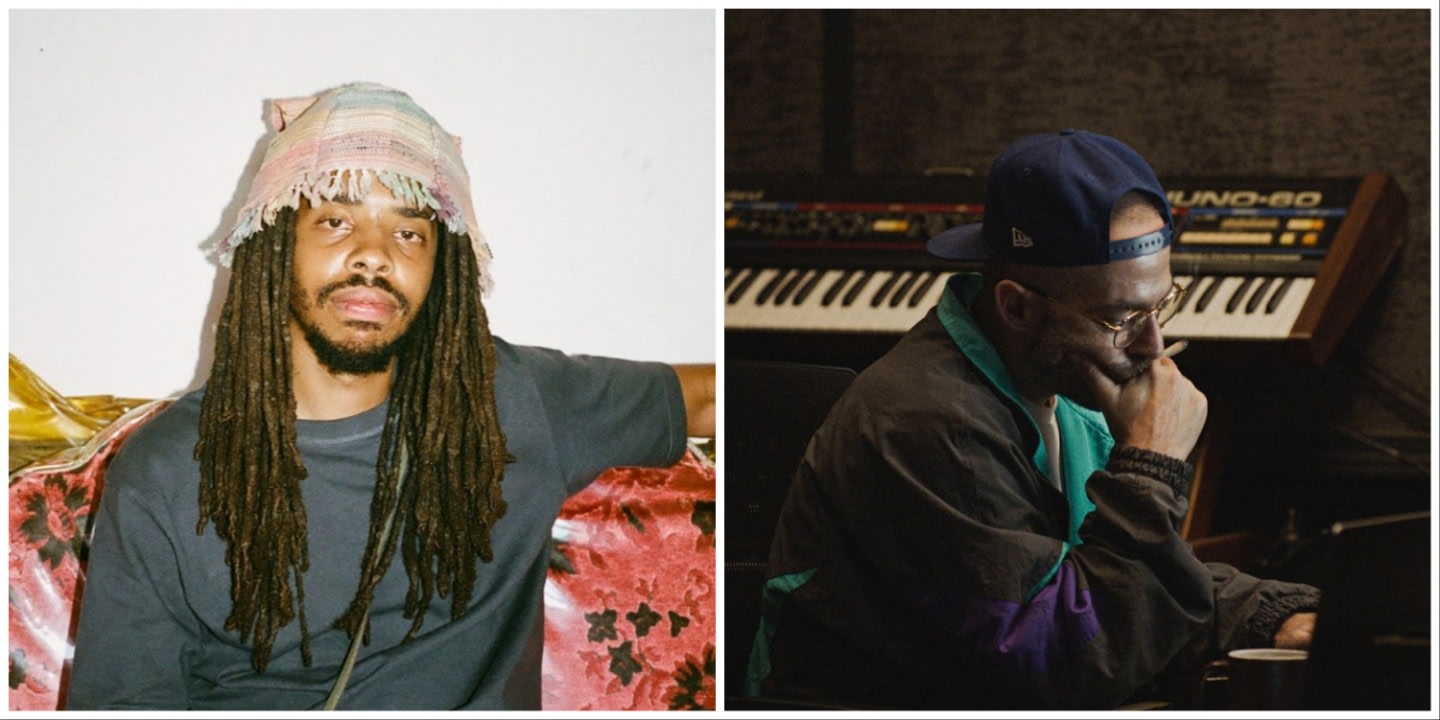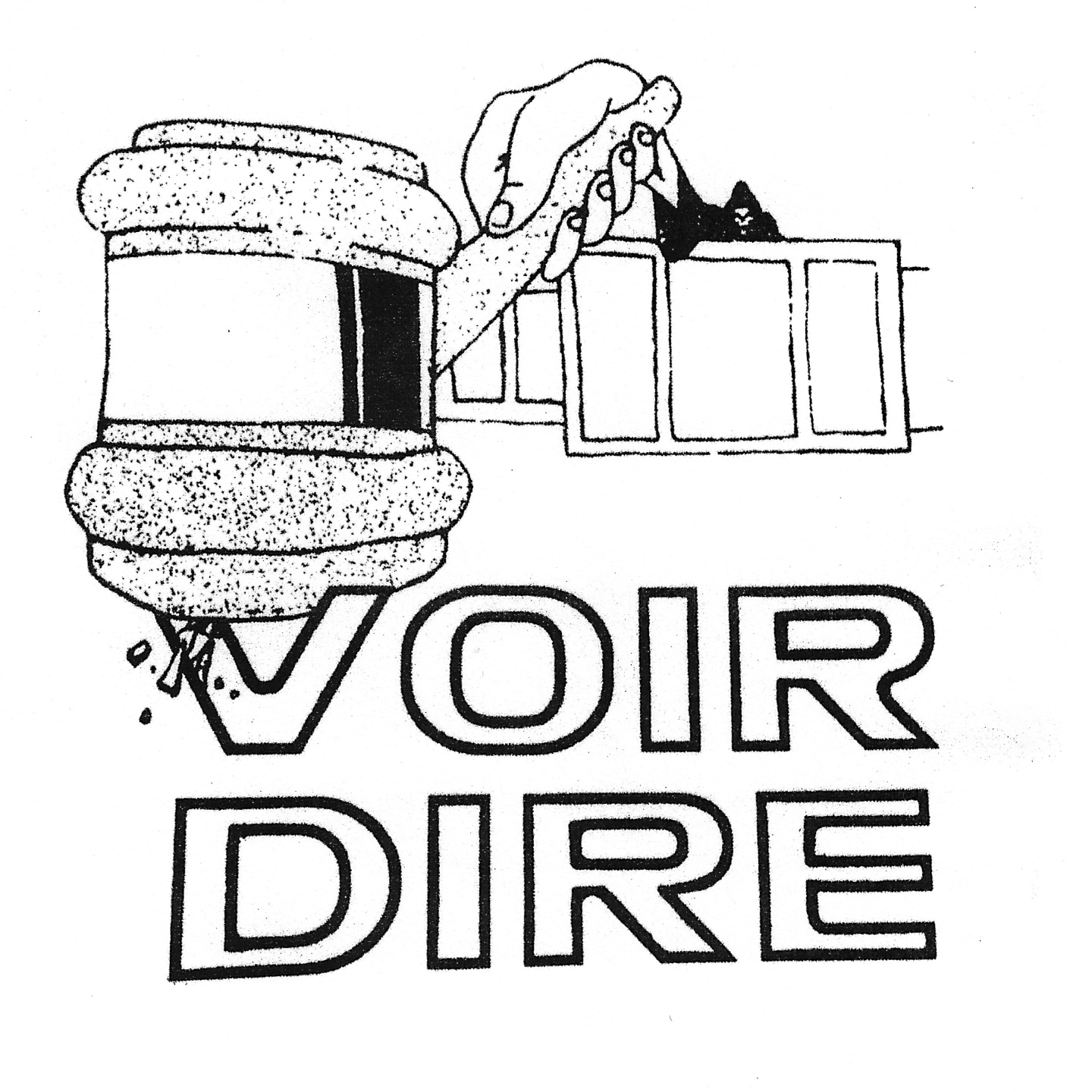 (L)Earl Sweatshirt. Photo by Ryo Tanzawa (R) The Alchemist. Photo by Ryo Tanzawa
(L)Earl Sweatshirt. Photo by Ryo Tanzawa (R) The Alchemist. Photo by Ryo Tanzawa
Voir Dire, the collaborative rap project between Earl Sweatshirt and veteran producer the Alchemist, was originally conceived as a needle in a digital haystack, a YouTube playlist buried under a fake name and burner account. The Alchemist first tweeted about the album in 2019; fast forward to 2021, and still no one had found it. The lead-up to the August 2023 release of the album was similarly convoluted and relied heavily on QR codes: they were found on Earl Sweatshirt merch, linking to screenshots of Alchemist tweets on a website called Gala Music; and at Earl’s Los Angeles concert on August 19, where online puzzles hosted on Gala Music revealed oblique references to the album’s name and a set of GPS coordinates in London. (The Alchemist also showed up at that LA show, setting up his equipment just to bring Earl a birthday cake and play no music). The GPS coordinates directed fans to Jazz Cafe in Camden, where Earl and Alc would unceremoniously “present” their joint album following Earl’s scheduled London show on August 25.
Online reports from Jazz Cafe indicate a disorderly afterparty that saw Earl perform 30 to 40 seconds of “Making the Band (Danity Kane)” before promptly dipping. Despite the circuitous promotion and anticlimactic show closer, Voir Dire should have been a victory lap, two critically lauded artists with palpable chemistry coming together for a thrillingly no-nonsense collaboration. Instead, The Alchemist is on Twitter saying “How about Fuck you , your criticizm, [sic] and whether u are annoyed or not.” on his third tweet at someone with 60 followers (The Alchemist declined to speak with The FADER for this column).
The criticism in question was over the platform where Voir Dire debuted. Gala Music is a Web3 platform selling music NFTs — digital certificates of authenticity stored in an ledger called the blockchain. Gala is best known as the non-fungible token hub of choice for Snoop Dogg, who briefly toyed with the idea of taking the entire Death Row catalog off digital service providers (DSPs) in favor of metaverse-based streaming and potentially made more than $44 million from NFT sales via Gala Music last year.
Voir Dire is available to stream for free, provided you create a Gala Music account with a valid email. Each of the 11 songs on the album has 1,000 associated NFTs available for purchase. Blockster reported that half of these 11,000 NFTs would be given away via “special promotion.” Beyond these music NFTs, Gala will also sell NFTs with tangible merch rewards (t-shirts, signed posters, physical art) and a few “experiences,” like a spot in a music video or a FaceTime call with the artists. Decrypt reported that the QR codes at Earl’s Los Angeles show, which encouraged concertgoers to “sign up to get a limited poster at the merch booth,” also gifted them a Gala wallet with a limited edition NFT — should they choose to claim it.
Voir Dire seems to have sold well, at least according to Gala Music’s public stats. The NFTs for five songs are only available for purchase as pairs or sets, but of the six tracks individually available (6,000 NFTs, 1,000 per song), 5,095 NFTs are reported to have been sold (85%). Even under the most conservative assumption that a full 500 in NFT “sales” for each track were in fact freebies, that’s still 2,095 NFTs sold. Decrypt has reported Voir Dire NFT prices equivalent to $225 per track on August 25, although the price of $GALA token, the platform’s on-chain currency, has plummeted in recent days (bringing down the dollar price of said NFTs) thanks to bombshell lawsuits between the company’s CEO and cofounder alleging fraud and corporate waste. Using the $225 per NFT figure, Voir Dire made somewhere between $471,000 and $1.14 million (2,095 or 5,095 NFT sales multiplied by $225). The declining value of $GALA token will push those numbers lower, but this range of profit doesn’t include sales of those higher tier NFT bundles and yet-to-be-released merch and experiences.
The average Spotify payout per stream is less than half a cent. Releasing via Gala Music offers artists an additional way to profit off their own music while still fulfilling contractual obligations to record labels and maintaining intellectual property rights. For artists with dedicated fanbases like Earl, Alc and Snoop Dogg, there’s likely some kind of lump sum payment up front as a reward for the press their clout can generate. That’s on top of the higher profit margins of Web3 platforms in general (Earl and the Alchemist may have also negotiated an even more favorable revenue split).
Still, cryptocurrency in general and NFTs in particular are a hard sell to anyone who doesn’t already see their purported utility. When NFTs first gained popularity in 2021, they benefited from a wider rush into speculative assets (Dogecoin and associated shitcoins; Gamestop and other meme stocks). Abundant liquidity paired with minimal regulation made Web3 fertile ground for institutions and investors, but also an abundance of bad actors. The initial NFT craze was characterized by significant environmental concerns and FOMO-induced investment by crypto bros and record labels alike. Headlines screamed over gauche price tags and high-profile cosigns (Kings of Leon! Steve Aoki! Eminem!). Generative projects like CryptoPunks and the Bored Ape Yacht Club found success and inspired a wave of clones, flooding the market past saturation. The bubble popped and they all fell down.
Platforms distributing music NFTs aren’t neutral, but none of their non-crypto competitors are either
Things have changed, though consumer skepticism around NFTs hasn’t waned. As of August 2022, just under half of all Americans had heard of NFTs and only 2% had purchased one, according to Pew Research. A survey of artists conducted by Water & Music lists environmental considerations as the second biggest contributor to Web3 hesitancy. But for fans, the environment is the number one barrier to purchase.
Carbon emissions remain an issue for NFTs, albeit on a smaller scale compared to when NFTs first gained popularity (most NFTs are built on the Ethereum chain, which changed how it processed transactions in September 2022, reducing energy consumption by 99.95%). Other misgivings remain, including security concerns, the general uncoolness of crypto, and the sensation that all of Web3 is an elaborate pyramid scheme. These hurdles are emblematic of the uphill battle any musician dabbling in this tech platform will face: the legacy of NFTs is defined by overpromising and underdelivering if not outright scamming and tech bro shortsightedness.
Under some lenses, NFTs are poised to overpromise and underdeliver on democratically supporting artists. “Only the top 1 percent of NFTs sell for more than $1000, whereas artists in the lower 34 percent of sales may actually be losing money on NFT sales because of fees,” musician and software developer Paul Slocum noted in 2022. Slocum goes on to assert “NFTs are reinforcing or even amplifying the same kinds of disparities one finds in the traditional art market,” but that relies on the assumption that the artists making the most money on NFTs are also the artists who make the most money outside of NFTs. Money does grease wheels, but if name recognition and resources were all it took to profit off NFTs, there wouldn’t be a major label release without a Web3 component.
 Voir Dire cover art
Voir Dire cover art
Platforms distributing music NFTs aren’t neutral, but none of their non-crypto competitors are either. Almost 80% of Spotify artists have less than 50 monthly listeners; minus distributor fees, I’d be surprised if the floor for breaking even via DSPs wasn’t significantly higher than the 35th percentile Slocum mentions. Record labels and institutional investors have muscled into Web3 — “major labels see this technology as further entrenching, not disrupting, their power” — but it’s also a space where an artist with just “4,561 monthly Spotify listeners” can make a quarter of a million dollars. There will be losers in the NFT market, but that’s just how markets function. To that end, music on Web3 reminds me of another polarizing digital platform, TikTok; where else could you sell “ABCDEFU” or Flyana Boss? Artists and record labels with the means will always throw money at problems until they see success, but there are avenues for savvy creatives to find footholds in the nuances of different formats and gain traction accordingly.
People’s negative feelings about NFTs have only been compounded and accelerated by parallel failures in the cryptocurrency space more broadly — on the “malicious” end of the spectrum, the collapse of FTX, and on the “bad luck” end of the spectrum, bearish markets dampening speculation. There’s also less money in NFTs now because there’s less money getting thrown around capital markets in general, and riskier assets like cryptocurrency or tech stocks aren’t getting as much investment. Against that backdrop, Voir Dire probably looks like a win for Gala Music; on September 1st, the company reported 57,321 new accounts in the month of August, characterizing it as their “first real wave” of user acquisition.
But while the Gala Music release of Voir Dire has inspired (allegedly) decent sales and some irate social media posts from fans (and Alc), it feels more accurate to say most people don’t really care one way or the other. The general public will probably just listen to “Sentry” until the rest of the album makes it to DSPs later this month — assuming they haven’t already procured a WeTransfer link with the MP3s. The streaming UI on Gala Music isn’t perfect — the “pause” button is really a “stop” button, you can’t scrub to a specific point in a track, some users report songs playing in random order — but if you want to hear the album right now, it’s manageable. If Earl and Alc had said “Hey, go to this website and give us your email and you can stream the album ahead of release,” people would be thrilled at the opportunity; that same proposition wrapped in an NFT token feels, to Web3 skeptics, like community commodification.
So the question lingers: why put your music on the blockchain? The short answer is of course, money; the longer answer is that Web3 technology and infrastructure enable fans to build community and offer artists feedback while also giving artists more control over revenue streams generated by their music — so, a warm fuzzy feeling and money. But the release of Voir Dire doesn’t really say that much about the state of the NFT market, already well-deflated by macroeconomic trends. It doesn’t even say that much about consumer resentment of cryptocurrency.
Instead, it points to the demands and expectations of music listeners accustomed to enjoying music via DSPs like Spotify or Apple Music. At first, I thought of the Voir Dire rollout as a blockchain mutation of how Mach-Hommy or Nipsey Hussle sell mixtapes, or perhaps an extension of selling thin air for real money (Yves Klein, G. Hassan). Now, it reminds me of the launch of Tidal, a big hollow spectacle that gestures at changing the industry and mostly changes which rich people get to profit (that Norwegian data fraud investigation hasn't been updated recently). On July 31, Gala Music announced that they would update their distribution algorithm to take streaming counts from other platforms into account. More for the big guys, less for the little guys. But hey — at least the music slaps.
Rap Column is a column about rap music by Vivian Medithi and Nadine Smith for The FADER.
